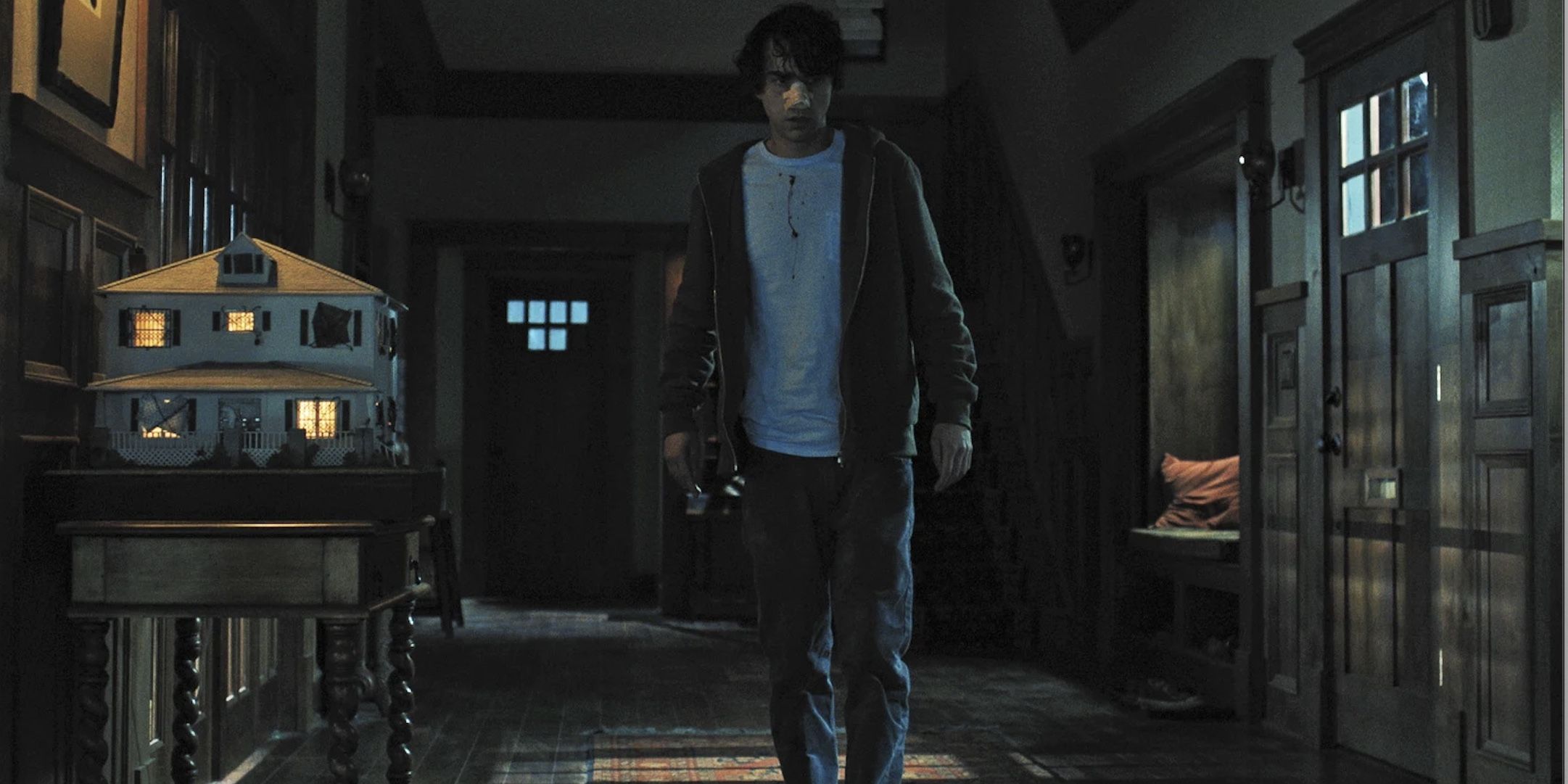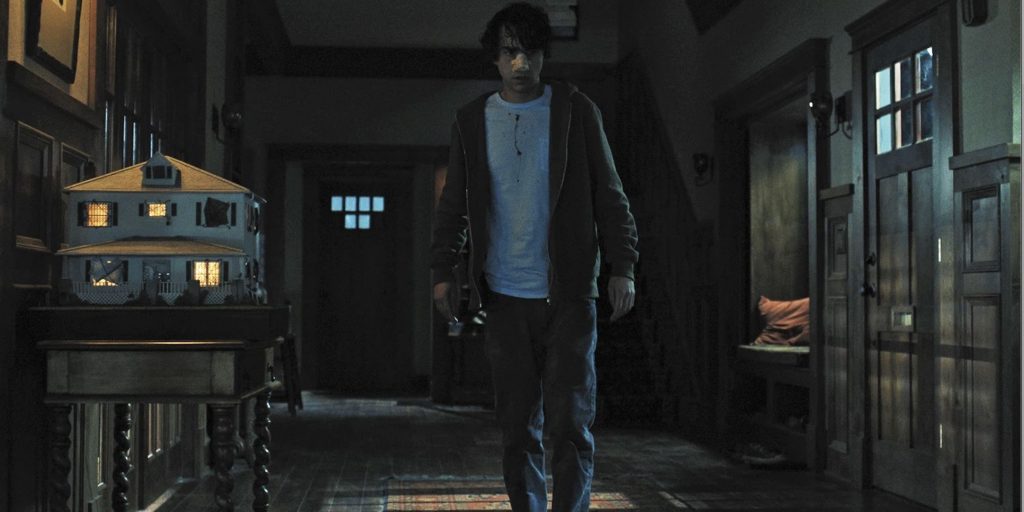
Ari Aster made one of the most terrifying horror movies of the last decade that was full of hidden meanings and blink-and-you'll-miss-it details. Hereditary was the director's first feature-length film that was in the making for several years before being released in mid-2018. It took years to write not because Ari Aster had been actually writing it for years, but rather because the director had been pulling from memories and emotional wounds of his past personal life to help create the story of a dysfunctional family being torn apart by literal and metaphorical demons. Although Aster refuses to go into explicit detail about his skeletons in the closet, he did say that he "was more pulling from feelings than experiences" when writing Hereditary.
This first detail in Hereditary that many already know about is that Annie's miniature dollhouses give away some of the plot within the opening scene. In an interview with Variety, Aster said that the events of the film were "absolutely inevitable, the family (had) absolutely no agency," and from the moment they (Annie, Peter, and Charlie) were born, they had no control over their lives no matter what they did or how hard they tried. In the interview, Ari Aster went on to say, "they’re dolls in a dollhouse being manipulated by outside forces. Any control they try to seize is hopeless."
RELATED: Megan Fox's New 24 Hour Thriller Piles On The Violent Twists And Turns
Even if Annie had not done the ritual like Joan said to, the cult would have found another way. Aster said this was just one of the many ways the cult would have gotten the family to participate in the ritual. Another clue to this inevitability was the pamphlet one of the cult members pushed through the Graham family's mail slot in their front door, showing one of the ways they tried to get the ritual started. Another clue about the ending that Aster fully gives away in the first act is how the final shot of the film will look.
After reading this, the movie will feel that much more unsettling knowing this poor family and its members were just a bunch of puppets, ironically unaware of their doom though it was right in front of them. Aster said that the diorama Charlie had been building with the decapitated dolls and heads of dead birds were part of Charlie's own version of Annie's dollhouses and "served as a shrine to Paimon." Aster said if you look closely, "you’ll see they’re headless figurines bowing to a pigeon-headed creature with a crown on its head, which is not far away from what we’re left with in the last scene of the film."
There is some subtle symbolism within Hereditary that shows the aura of evil and death that surrounds the family like an inescapable cloud of black smog. Though some view chocolate as a symbol of love and commitment, others would see chocolate as a metaphor for sin and temptation. Aster said that Charlie was displaced by Paimon pretty much since she was born, and that she was the first successful host for the demon. Chocolate is often referred to as "the Devil's food" and Aster may have been using chocolate as a way to show how Charlie was actually the demon Paimon.
There's also the scene with Peter being covered in ants crawling inside his skull and out his mouth. In art history, ants symbolize death or decay and are often used in paintings to depict human mortality or impermanence. The ants show how Peter's time in his own body was not permanent and would be ending soon. Although ants can also be seen as creators, carrying 20 times their weight to build and construct homes or carry food, in the case of Hereditary it can be assumed they mean the opposite.
During this scene with the ants, it turns out it's just Annie's dream. In her dream, Annie reenacts the night she slept-walked and almost killed herself and her two children by lighting them on fire with paint thinner. Ari Aster said that in Hereditary, he wanted to play with inescapable fears—the fear of things where no one has control over the outcome of like fear of death, fear of not really knowing those closest to us, or the fear of abandonment. No matter what someone does, they cannot escape death, and the Graham family could not escape their fate with the demon Paimon.
But the one thing Annie felt she did have control over was ending the lives of herself and two children. Annie trying to kill them all was not just another messed up thing, but a clue that Annie was actually subconsciously aware of her fate that she was trying to escape. This theory is confirmed by this line here that Annie states when Peter accuses her (in the dream) of trying to kill him: "I didn't, I was trying to save you." Annie didn't want to be a mother because of her horrible relationship with her's, but she did love her children once she had them. However, they were still stuck in a circle of toxicity—something the set designers tried to convey through the repeated symbolism of a circle in the background of set designs.
The cult in Hereditary had been watching the family for years. Several times when the camera lens is focussed on the outside of the house (like a spectator looking into a dollhouse), cult members are seen surrounding the Graham family home. They are closing in the circle, as shown by the breath outside Peter's bedroom window—always watching, always getting closer. The family members' lives closely resemble classic Greek tragedy, and viewers can even hear a discussion of free will by Greek playwright Sophocles being discussed in Peter's class. The symbol of Paimon can be found throughout the film, like on the grandmother's necklace, on the pole that later decapitates Charlie, and even in Joan's home showing how close the cult is to their goal now that Peter is becoming more and more vulnerable.
Even one of Peter's close friends is not on his side (something that would mess with anyone's head) as he is later seen with the cult members in the final act. The last clue that shows how the family in Hereditary would meet its end is shown by the black tea leaves that show up three times—once when the cult member puts it on the lips of the grandmother at her funeral, once when Annie drinks the tea at Joan's, and once on a close up of a photograph of the grandmother, bottle feeding Charlie, suggesting she was having Charlie drink whatever this tea was in order to displace her from her body (which is even discussed in the screenplay itself).
MORE: Scarlett Johansson Played A Different Kind Of Black Widow In This Chilling Sci-Fi
